Ancient Warfare is a unique publication focused exclusively on soldiers, battles, and tactics, all before 600 AD. Starting with ancient Egypt and Persia and continuing to the fall of the Western Roman Empire, Ancient Warfare examines the military history of cultures throughout Europe, the Middle East and parts of Asia and Africa. Ancient Greece and Rome receive the most frequent coverage, due both to the wealth of contemporary sources and the modern fascination with these two great civilizations. Subject-matter ranges from the familiar to the more obscure: while Alexander the Great, the Persian Wars and Caesar’s Gallic campaigns all receive regular coverage, Ancient Warfare also looks at some of the less common parts of ancient military history, from chariots as battle taxis to PTSD in antiquity.
Ancient Warfare Magazine
PRELIMINARIES NEWS ITEMS BY LINDSAY POWELL
Errata
The first bows and arrows used in Eurasia
Wooden 'gravestones' found at Roman fort
Horseback riding began at least 5000 years ago
Cremated bones yield their secrets
Hands as battle trophies
HAVE YOU READ?
THE PARALLEL DEVELOPMENT OF MOUNTED WARFARE EARLY GREEK CAVALRY • The hoplite is held up to us as the ideal ancient Greek warrior. Modern considerations of ancient Greek warfare often sideline all other units for this image. In line with this, the cavalry of ancient Greece is usually earmarked as a foreign creation that the majority of Greeks - at least below Thessaly - balked at. This imported cavalry was not only foreign, but also came late to the game, making the unit ineffective, undervalued, or both. Of course, this view comes with its caveats. As for Greek cavalries being 'foreign' or 'too late', such labels seem to be unfounded. Literary and archaeological evidence traces horsemanship and riding to battle on horseback as far back as 1400 BC in Greece, similar to Egyptian and Hittite riders.
NOT SIMPLY SOMETHING FOR YOU TO THROW THE PILUM • The pilum is typically perceived today as the quintessential heavy javelin of the Roman legionary. How the weapon was used by Roman legionaries is largely misunderstood, however. Rather than simply being a javelin, it was a highly versatile weapon that packed a punch.
THE CITY OF CONSTANTINOPLE AND ITS ORBIT THE NEW ROME • From its foundation as a new capital of the eastern half of the Roman Empire in AD 330, Constantinople placed an enduring stamp on the Empire. It was the focus of much activity in the fourth century and, as the West fell in the fifth century, Constantinople endured and became the centre of the Empire. It always considered itself simply a continuation of the Roman Empire, and understanding the military history of Rome from the fourth century onwards requires an understanding of Constantinople.
THE PERSO-ROMAN WARS OF AD 337-361 THE SIMURGH AGAINST THE AQUILA • Since 54 BC, Mesopotamia had been fought over between the Romans and Persians. The balance of power in the area shifted constantly between the two nations as time passed. The defeat of the Sasanians in AD 298 at the Battle of Satala and the subsequent peace treaty, which gave the Romans control of Armenia and territory in Mesopotamia up to the Tigris River, brought an end to hostilities. War would return, however, after 40 years of peace.
Temporary respite
THE BATTLE OF THESSALONICA, AD 380 ANOTHER GOTHIC VICTORY • In the lands of the Balkans, more than 1600 years ago, the Roman Empire came into conflict with the Goths. For seven years battles were fought, one of which was the Battle of Thessalonica in 380. The history of this battle, the sources, and opinions about it are elusive and hard to pin down, but let's first look at how it came about.
THE BATTLE OF ADRIANOPLE, 9 AUGUST, AD 378 THE EMPIRE'S DARKEST DAY • In AD 376, an entire nation of Goths...
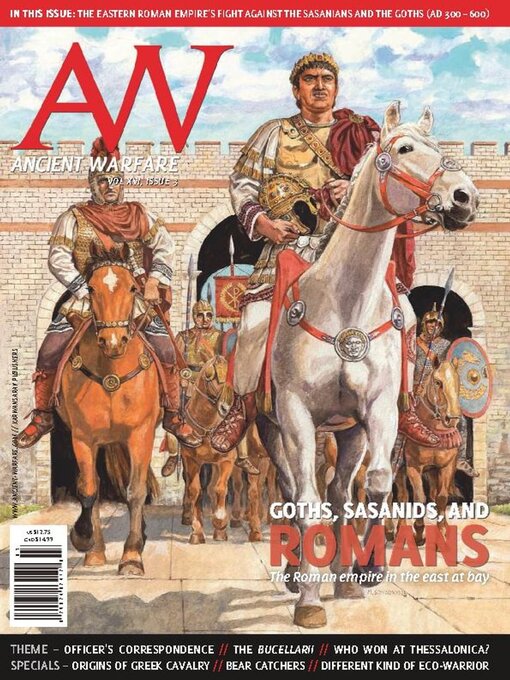
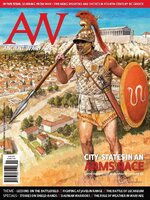 AW XVIII.1
AW XVIII.1
 AW XVII.6
AW XVII.6
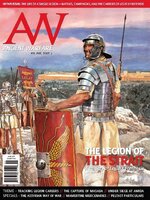 AW XVII.5
AW XVII.5
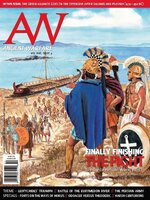 AW XVII.4
AW XVII.4
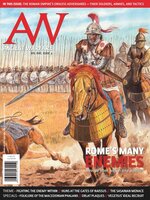 AW XVII.3
AW XVII.3
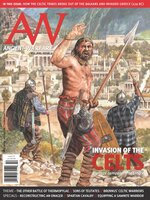 AW XVII.2
AW XVII.2
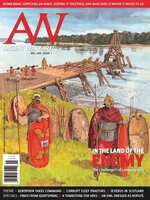 AW XVII.1
AW XVII.1
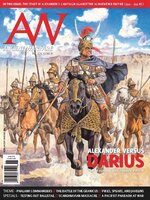 AW XVI.6
AW XVI.6
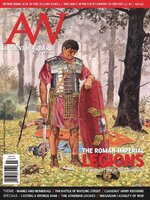 AW XVI.5
AW XVI.5
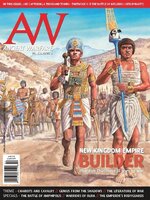 AW XVI.4
AW XVI.4
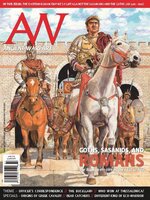 AW XVI.3
AW XVI.3
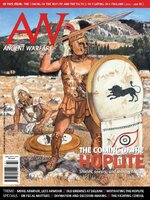 AW XVI.2
AW XVI.2
 AW XVI.1
AW XVI.1
 AW XV.6
AW XV.6
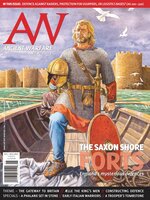 AW XV.5
AW XV.5
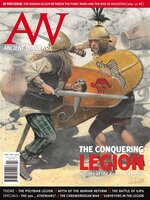 AW XV.4
AW XV.4